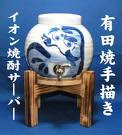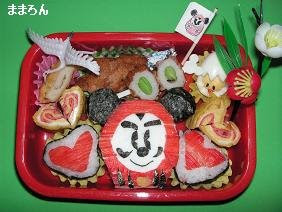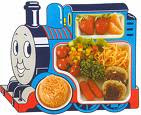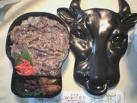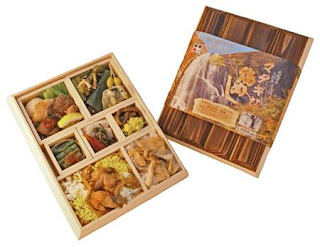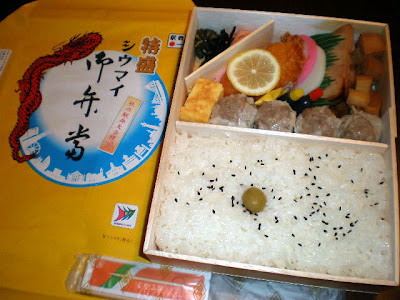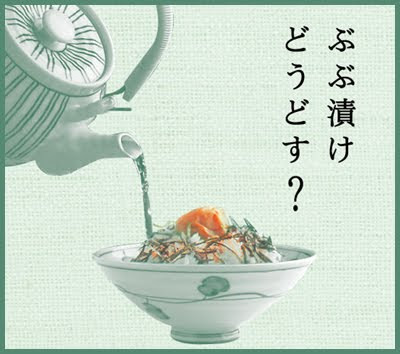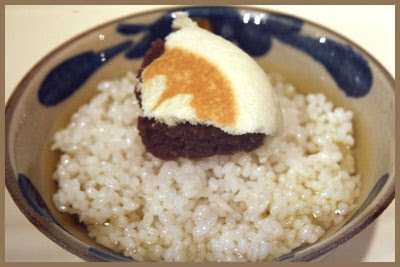[ . BACK to WORLDKIGO TOP . ]
::::::::::::::::::::::::::::::::::::::::::::::::::::::::::::::::::::::::::::::::::::::::::::::::::::
Noodles (menrui 麺類 - めんるい) Nudeln
***** Location: Japan
***** Season: Topic
***** Category: Humanity
*****************************
Explanation
quote with external LINKS

The first written account of noodles is from the East Han Dynasty between AD 25 and 220. In October 2005, the oldest noodles yet discovered were found at the Lajia site (Qijia culture) along the Yellow River in Qinghai, China. The 4,000-year-old noodles appear to have been made from foxtail millet and broomcorn millet.
Wheat noodles:
Chūka men, chuukamen (中華麺): Japanese for "Chinese noodles", used for ramen, chanpon and yakisoba. Osaka and western Japan.
Sōmen, soomen (そうめん): very thin Japanese wheat noodles
Udon (うどん): thick Japanese wheat noodles
Mug beans noodles:
Cellophane noodles, also known as glass noodles, or bean vermicelli. fěnsī (粉絲) in Chinese,
harusame(春雨)
Noodles are a popular item in Japanese cuisine. Varieties include:
Ramen - thin, wheat-based noodles with soda water. The dough is set to rise before being pulled.
Chinese-style noodles
Shirataki - noodles with very low carbohydrates and calories
Soba - medium, buckwheat-based noodles
Somen - very thin, wheat-based noodles
Udon - thick, wheat-based noodles
.................................................................................See also
Yakisoba, a popular soba dish
Champon, a noodle soup of Chinese origin
Instant noodles
Cup noodles
Sapporo Ichiban
Chinese noodles
© More in the WIKIPEDIA !
http://www.jetro.org/trends/food_ingredients_somen.php
kiji 生地 dough
Usually kneaded a lot because little gluten in the rice or soba.
Morioka, the capital of NOODLES in Iwate prefecture !!!
wankosoba わんこ蕎麦
tsukemen 漬け麺 dipping noodles in broth (tsukejiru 漬け汁)
:::::::::::::::::::::::::::::::::::::::::::::::::::::::::::::::::::::::::::::::::::::::::::::::::::
 Katsushika Hokusai - Manga 葛飾北斎 漫画
Katsushika Hokusai - Manga 葛飾北斎 漫画
:::::::::::::::::::::::::::::::::::::::::::::::::::::::::::::::::::::::::::::::::::::::::::::::::::
UDON noodles
The
three famous UDON noodle types of Japan
Sanuki Udon from Shikoku 讃岐うどん
Kishimen from Nagoya きしめん
. . . himokawa udon ひもかわうどん
Inaniwa Udon from Akita 稲庭干饂飩
ankake udon あんかけうどん Kyoto style thick udon soup
It is a local kind of KITSUNE, with small stripes of abura-age, greens of the region and a thick sauce of katakuriko.
This keeps the noodles warm. This dish was "invented" in the Gion quarters, where many people used to order food. To keep it warm during transportation, the thick ankake was spread over the noodles.
This shows the warm heart of Kyotoites when entertaining guests.
. . . CLICK here for Photos !
also
gomoku ankake udon 五目あんかけうどん
! Recipes !
himiudon, himi udon ひみうどん
from Toyama
. . . CLICK here for Photos !
hippari udon ひっぱりうどん "pulling at udon noodles"
with natto and canned fish sauce
from Yamagata prefecture
Ise udon 伊勢うどん served at the shrine Ise Jingu
三重県(伊勢神宮)Mie Prefecture
They are rather thick with mochigome glutinous rice. They come with a thick "black" soy sauce broth, and a few cut leek rings.
. . . CLICK here for Photos !
. Ise Kaido 伊勢街道 Pilgrim roads ot Ise .
kakeudon, kake udon かけうどん
Udon in broth
. . . CLICK here for Photos !
Chishaku-in rongi sumitaru kake-udon
after the dispute
at Chishaku-in
a bowl of udon noodles
Kawasumi Sugekatsu 川澄祐勝, priest of the Shingon sect
. Temple Chishaku-In 智積院 .
:::::::::::::::::::::::::::::::::::::::::::::::::::::::::::::::::::::::::::::::::::::::::::::::::::::
Kansai Sanuki Udon Pigrimage ralley
関西讃岐うどん 西国三十三ヶ所巡礼
A
journey to 33 restaurants in Osaka and three nearby prefectures to enjoy thick ‘‘sanuki udon’’ is under way to give momentum to a boom in the pasta-like noodles that originated in Japan.

Organizers call the journey ‘‘Kansai sanuki udon pilgrimage rally.’’ It involves participants slurping up noodles at one restaurant after another until they complete visits to all 33 eateries on the itinerary in Osaka, Kyoto, Hyogo and Nara prefectures. They will collect a stamp at each stop.
Keishi Kishimoto, 41, of Suita, Osaka Prefecture, was among those who came up with the idea of the rally three years ago and sounded out the restaurant owners.
The 33 restaurants in the rally were selected from among 190 eateries by eight udon fans, including a dentist and a self-employed person.
Yasuhiro Yamamoto, the 45-year-old manager of udon restaurant Mitsushima Shinuchi in Kadoma, Osaka, said, ‘‘I now have an increased rapport with those in the same line of business thanks to the rally. I have also grown closer to my customers. I am going to offer each participant in the rally a serious bowl of udon.’‘
Those who complete visits to all 33 restaurants are scheduled to take part in a celebratory party that the restaurant managers will also attend.
More is here
source : www.japantoday.com/
:::::::::::::::::::::::::::::::::::::::::::::::::::::::::::::::::::::::::::::::::::::::::::::::::::::
kitsune udon きつねうどん "fox udon" with
abura-age tofu and onions
"Fox Noodles"
speciality of the Osaka area
inari foxes like to eat this type of tofu, hence the name.
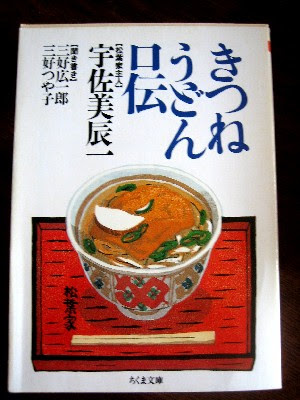 . . . CLICK here for Photos !
! Recipes !
. . . CLICK here for Photos !
! Recipes !
There are various kinds of KITSUNE udon in all parts of Japan.
The dashi used for the soup changes from East to West Japan. Also the ingredients a apart from abura-age.
In Edo, they use left-overs from tempura frying instead of tofu, and the surprize when finding this out is the "Fox effect", kitsune.
In other parts, Chinese soba are used for noodles, not wheat udon.
kuromame udon 黒豆うどん (くろまめうどん) udon with black beans
black soy beans flower is mixed with the wheat
matsuri udon まつりうどん
Udon for festivals
from Aji Minato 庵治みなと near Takamatsu, Shikoku
They are extra long to bring good luck with the pun
"nagaku tsuzuku yoo ni", may the good things last
long for you.
. mimiudon, mimi-udon 耳うどん "Udon like ears"
Tochigi, Sano town
miso nikomi udon 味噌煮込みうどん udon simmered in miso-based soup
speciality of Nagoya
. . . CLICK here for Photos !
! Recipes !
raudon らう鈍 kind of ramen with udon-like noodles
with kimchi キムチ風らう鈍
Speciality of Shikoku
Sanuki udon 讃岐うどん from Kagawa
takiudon, taki-udon, taki udon 滝うどん "waterfall udon"
eaten close to a waterfall
. . . CLICK here for Photos !
tamago soomen, tamago somen 卵素麺 たまごそうめん somen with eggs
. . . CLICK here for Photos !
! Recipes !
toshikoshi udon 年越しうどん "udon to pass into the new year", eaten on January 1.
tori nanba udon 鳥なんばうどん with chicken and leek, Osaka style
Nanba is a suburb famous for delicious vegetables.
. . . CLICK here for Photos !
! Recipes !
Tsukimi udon, with an egg as decoration
Umen, uumen 温麺 see below, Miyagi.
Yaseuma ... sweet noodle dish from Oita
zarusoba, zaru-udon ... eaten cold, in a bamboo basket
they are only dipped slightly in a sauce, not completely submerged.
and one more found on the way

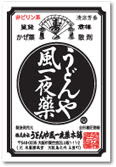 udonya kaze ichiya kusuri うどん屋風一夜薬
medicine from the noodle shop
to heal your cold over night
udonya kaze ichiya kusuri うどん屋風一夜薬
medicine from the noodle shop
to heal your cold over night
a warm bowl of udon soup with lots of ginger and some cold medicine helps ward off a cold in winter ... This medicine was first made in Osaka in the year Meiji 9, 1876 and sold at
udon noodle shops (udonya). At that time
udon had just become a kind of fast food for the local people.
『うどんや』にある『風(かぜ)』が『一夜』で治るお『薬』
This expression has also become a
winter kigo for haiku
and is used in
rakugo funny stories.
:::::::::::::::::::::::::::::::::::::::::::::::::::::::::::::::::::::::::::::::::::::::::::::::::::::
WASHOKU : SOBA, buckwheat noodles
Buchweizennudeln
Soba (蕎麦 そば): buckwheat noodles and Daruma san
Izumo Soba, Shimane 出雲そば Wariko Soba 割子そば(わりごそば)
:::::::::::::::::::::::::::::::::::::::::::::::::::::::::::::::::::::::::::::::::::::::::::::::::::::
:::::::::::::::::::::::::::::::::::::::::::::::::::::::::::::::::::::::::::::::::::::::::::::::::::::
Noodle soups can be and should be
slurped when eating ... no noise, no good food!
There are many famous rakugo funny stories with the teller performing this picking up of noodles with his fan from his cupped hand, slurping as part of the fun.
 source : www.kotsu.metro.tokyo.jp
performing "tokisoba" 時そば
source : www.kotsu.metro.tokyo.jp
performing "tokisoba" 時そば "Time For Noodles"
Read the story here in my article about
Rakugo, comic storytelling performances
:::::::::::::::::::::::::::::::::::::::::::::::::::::::::::::::::::::::::::::::::::::::::::::::::::
NOODLES from this WASHOKU BLOG
..... REGIONAL DISHES with noodles
Uumen, umen 白石温麺 dried "warm" noodles from Shiroishi town MIYAGI
jajamen じゃじゃ麺 / じゃじゃ面 Morioka, IWATE
Soomen, somen noodles 索麺 HYOGO
karee soomen カレーそうめん soomen with curry sauce
きしめん kishimen, kishimen noodles from AICHI
三輪そうめん Miwa soomen, thin noodles from Miwa, NARA
. . . . . nyuumen にゅうめん wheat noodles from Miwa
出雲そば Izumo soba, buckwheat noodles, TOTTORI
ふくめん fukumen, noodle soup from Uwajima 宇和島, EHIME
五色そうめん, たいめん goshiki soomen, taimen, noodles, EHIME
島そうめん shima soomen, soomen noodles expanded by hand, KAGAWA
. . . . . 讃岐うどん Sanuki udon noodles, KAGAWA
チャンポン chanpon, mixed noodle soup, NAGASAKI
沖縄そば Okinawa soba, noodle soup, OKINAWA
 Panda Soomen
Panda Soomen パンダそうめん from Ueno Zoo, Tokyo
Somen noodles decorated to look like Panda.
:::::::::::::::::::::::::::::::::::::::::::::::::::::::::::::::::::::::::::::::::::::::::::::::::::::
Other products made into noodles
rice flour is made in thin
biifun ビーフン "cellophane noodles", they come from Vietnam and China.
. . . CLICK here for Photos !
They are prepared in soups, or fried or even with curry sauce.
Other starch products made into noodles
daikon 刺身のつま radish cut in long threads as garnish for sashimi
edamame made into harusame 春雨
ikasoomen イカそうめん squid cut into stripes like soomen
konnyaku 糸コンニャク shirataki Fadennudeln
kuzukiri 葛切り
from arrowroot starch
rokubei 六兵衛(山芋も) from sweet potatoes or yamaimo
tengusa seaweed ところてん(心太) made into tokoroten
:::::::::::::::::::::::::::::::::::::::::::::::::::::::::::::::::::::::::::::::::::::::::::::::::::::
Cup noodles カップヌードル Cup O Noodle
. . . CLICK here for Photos !
New with Gundam ガンダム
ガンプラ付カップヌードル
Gunpla (or gan-pura, a Japanese portmanteau of "Gundam" and "plastic model")
The first plastic Gundam model kits were sold in 1980 in Japan.
Gundam Food !
to celebrate the 30th aniversary of the Gundam robot anime series.

A giant Gundam robot is being built in Odaiba, Japan, 2009.
Reference : Gundam 2009
From my photo files:
The BIG GUNDAM at Kume, Michi no Eki Rest Area, Okayama
 source : ww.alafista.com
source : ww.alafista.com
Snow in 2014 - Cup Noodle Museum in Yokohama
:::::::::::::::::::::::::::::::::::::::::::::::::::::::::::::::::::::::::::::::::::::::::::::::::::::
..... KIGO with noodles
Hiyamugi 冷麦 (ひやむぎ) Wheat noodles chilledon ice
and served with a dipping sauce
Hiya soomen 冷索麺 (ひやそうめん) cold thin somen noodles
Kuzuneri 葛練 (くずねり) vermicelli with kuzu starch
Kuzu soomen 葛索麺 (くずそうめん) kuzu somen noodles
made with kuzu arrowroot starch.
Shin soba 新蕎麦 (しんそば) new buckwheat noodles
Sobatoro, buckwheat noodles with grated yam,
蕎麦とろ(そばとろ)
Kama-age udon 釜揚饂飩 (かまあげうどん)
udon noodles in broth
Yotakasoba 夜鷹蕎麦 (よたかそば)
Buckwheat noodles for the late night hawkers.
Sakubei noodles, sakubei さくべい 索餅
The oldest form of the noodles, sakubei, produced by adding rice powder to flour, was introduced from China in the eighth century.
kigo for early autumn
***********************
Worldwide use
Sanuki Udon 讃岐うどん
Der Legende nach brachte der in der Sanuki-Provinz geborene berühmte Priester und Ahnherr der Pilgerfahrt zu 88 Tempeln von Shikoku, Kobo Daishi Kukai 弘法大師空海, der Gründer des Shingon-Buddhismus, diese Nudelzubereitung um 800 mit von seinen Studienfahrten nach China, aber Beweise gibt es nicht dafür. In China wurden die „
Konton こんとん“ gegessen, eine Art Teigtaschen mit einer Füllung aus Hackfleisch und Gemüse, in Brühe gekocht.
Heute noch sind die Sanuki-Udon eine meist kostenlose Bewirtung für die Pilger von Shikoku。
Es gibt verschiedene Möglichkeiten, diese Sanuki-Nudeln zuzubereiten.
bukkake udon – Die gekochten Nudeln werden mit wenig dicker Nudelsuppe-Dashi übergossen und meist ohne weitere Zutaten gegessen, um den Nudelgeschmack zu genießen.
kakeudon – Dünne Nudelsuppe-Dashi wird über die gekochten Nudeln gegossen. Die Garnierung erfolgt mit fein geschnittenem Lauch und frittierten Tempura-Panaderesten, eventuell einige Scheiben Kamaboko.
kama-age udon – Die Nudeln werden heiß, ohne sie zu wässern, aus dem Kessel in eine Schale gefüllt. Zum Essen werden sie in gesondert angebotene Sauce aus Dashi und Sojasauce getaucht.
kijooyu udon (shooyu udon) – Etwas Sojasauce wird über die gekochten Nudeln gegossen. Manchmal wird noch Saft von Sudachi-Zitrusfrüchten darübergeträufelt.
shippoku udon – Die gekochten Nudeln werden mit einer süßen Suppe von gekochtem Fleisch und Gemüse der Saison übergossen. Diese Version findet sich in Ost-Sanuki.
yudame – Gekochte und danach kalt gewaschene Nudeln werden noch einmal in heißes Wasser gelegt und so angeboten. Zum Essen werden sie in Sauce getaucht. Im Sommer können sie auch in kaltes Wasser gelegt werden.
*****************************
Things found on the way
Soba 蕎麦 そば <> Daruma Eating Buckwheat Noodles
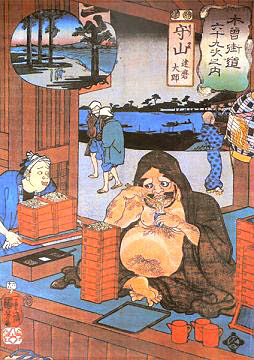 Daruma Udon ... 招福だるまうどん
Cup noodle soup カップラーメン
Daruma Udon ... 招福だるまうどん
Cup noodle soup カップラーメン
カップヌードル (Kappu Nūdoru, Cup Noodle) with DARUMA
Including history of cup noodles
external LINKS
A whole page with cup noodle soup covers !豚骨編
Osaka 大阪おうどんの会
:::::::::::::::::::::::::::::::::::::::::::::::::::::::::::::::::::::::::::::::::::::::::::::::::::::
"Time For Noodles"
A Very Abbreviated Rakugo
In the old days, you could always get something cheap to eat after hours at one of the little stalls on the street that sold noodles in broth for 16 mon a bowl.
Late one night a customer at one of these stands was raining compliments nonstop on the noodle vendor: the service was prompt and decorous beyond all expectation, the bowl was a delight to the eye, the contents a miracle of generosity. The broth -- ah, the broth -- was seasoned to perfection. "How much?" he demanded at last. "Sixteen mon? Cheap, for a princely feed like that. All I've got is small change, though; better let me count it out in your hand."
"Go right ahead."
"One, two, three, four, five, six, seven, eight -- say, what time is it?"
"Nine."
"Ten, eleven, twelve, thirteen, fourteen, fifteen, sixteen. There you are -- and so long."
Overhearing this exchange is an Edo ne'er-do-well a little less talented; the following evening he picks out another noodle vendor and tries the same routine, but with very different results. The service is dreadful, the crockery is chipped and dirty, and the broth is just salt and hot water. Compliments are a little hard to summon up. ("Of course, it is just the right amount of hot water.") Finally comes the moment to pay up and work the swindle:
"Better let me count it out in your hand. One, two, three, four, five, six, seven, eight -- say, what time is it?"
"Four."
"Five, six, seven . . . "
source : Rakugo
*****************************
HAIKU
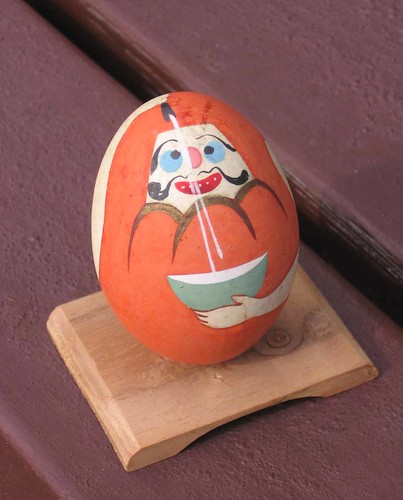 Daruma san
Daruma san
struggles with his short arms ...
noodle life
Gabi Greve, November 2008
click Daruma for more photos
*****************************
Related words
*****
Ramen, raamen ラーメン Chinese noodle soup
***** MORE ....
Soups
*****
WASHOKU : General Information
culinaria
:::::::::::::::::::::::::::::::::::::::::::::::::::::::::::::::::::::::::::::::::::::::::::::::::::




